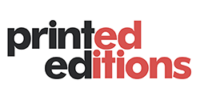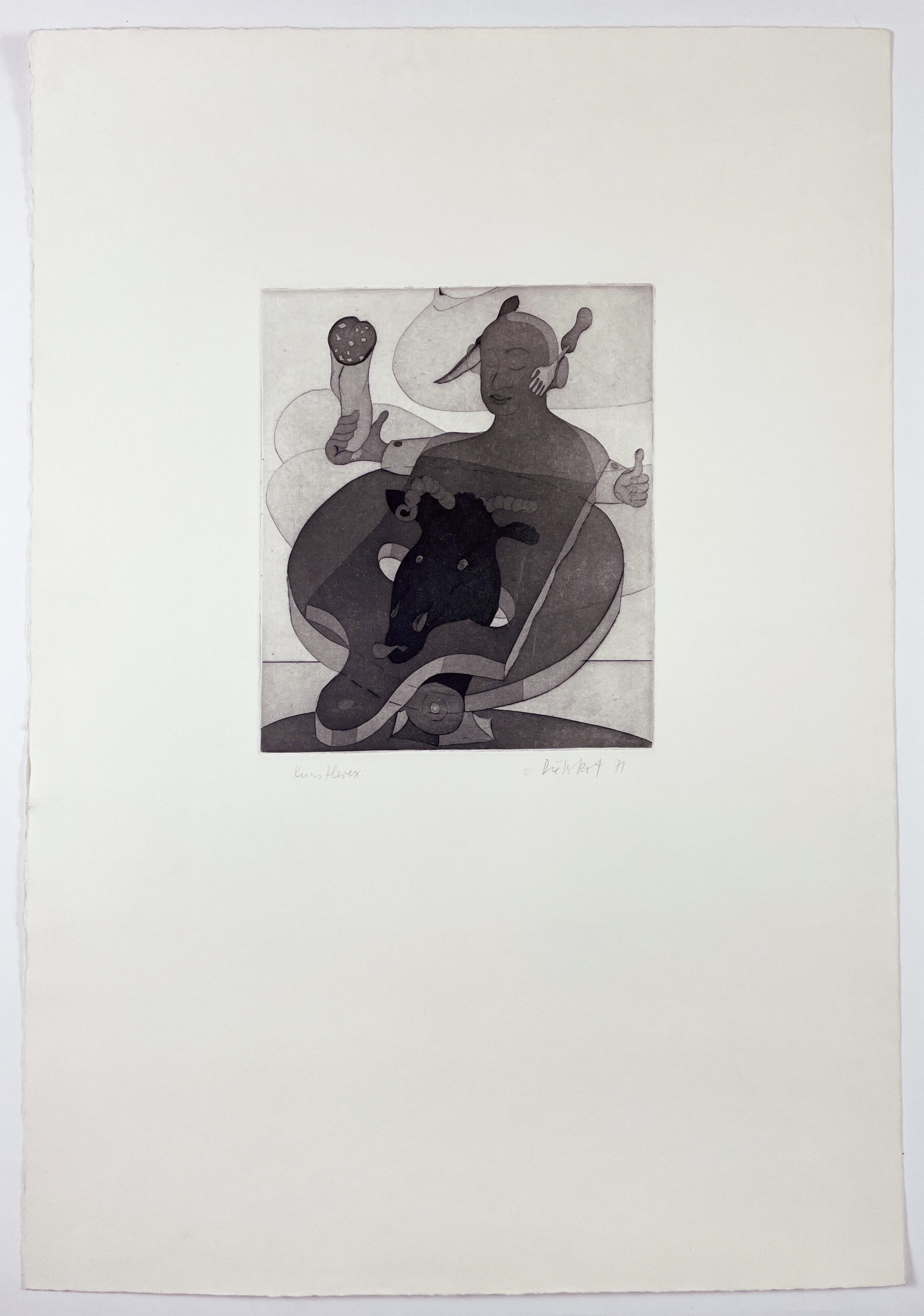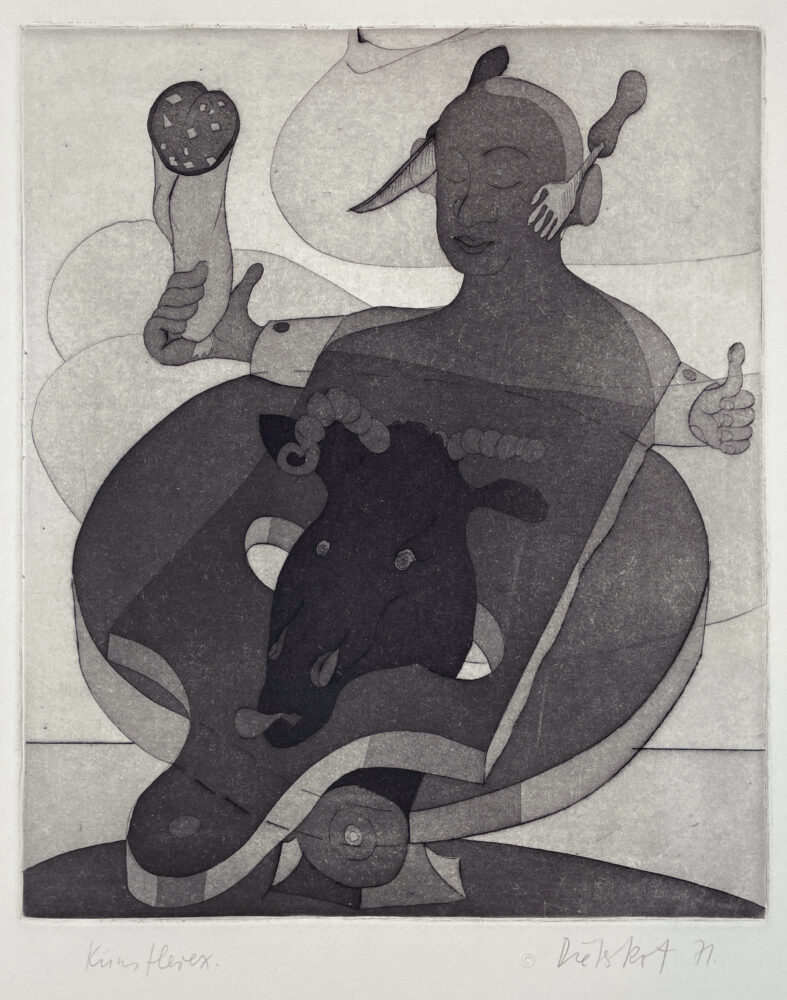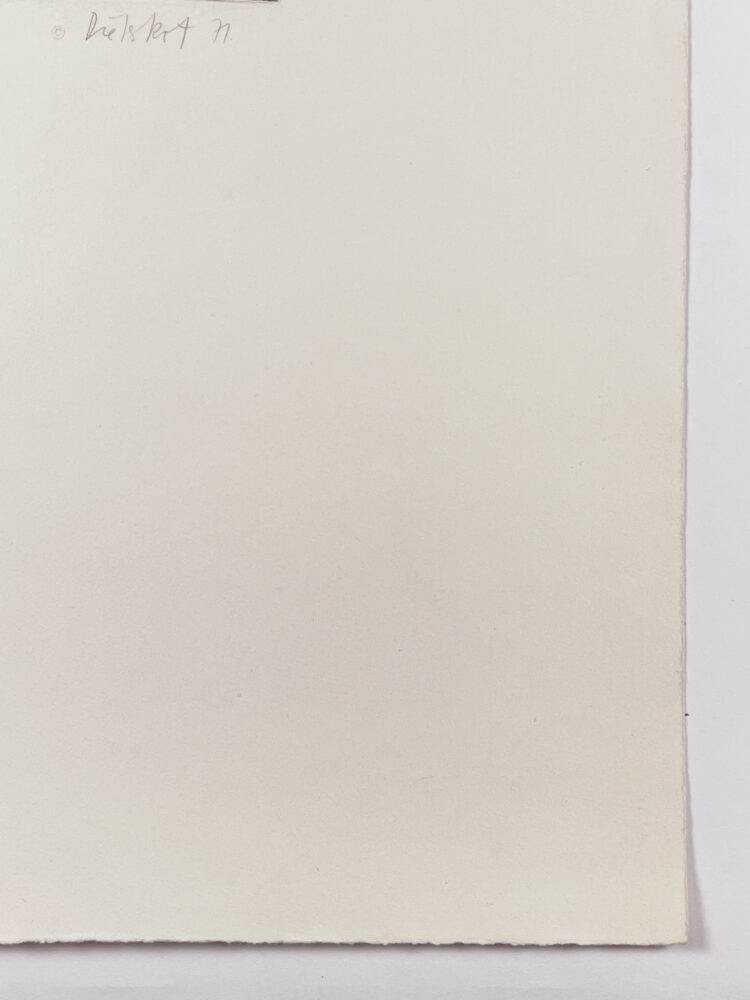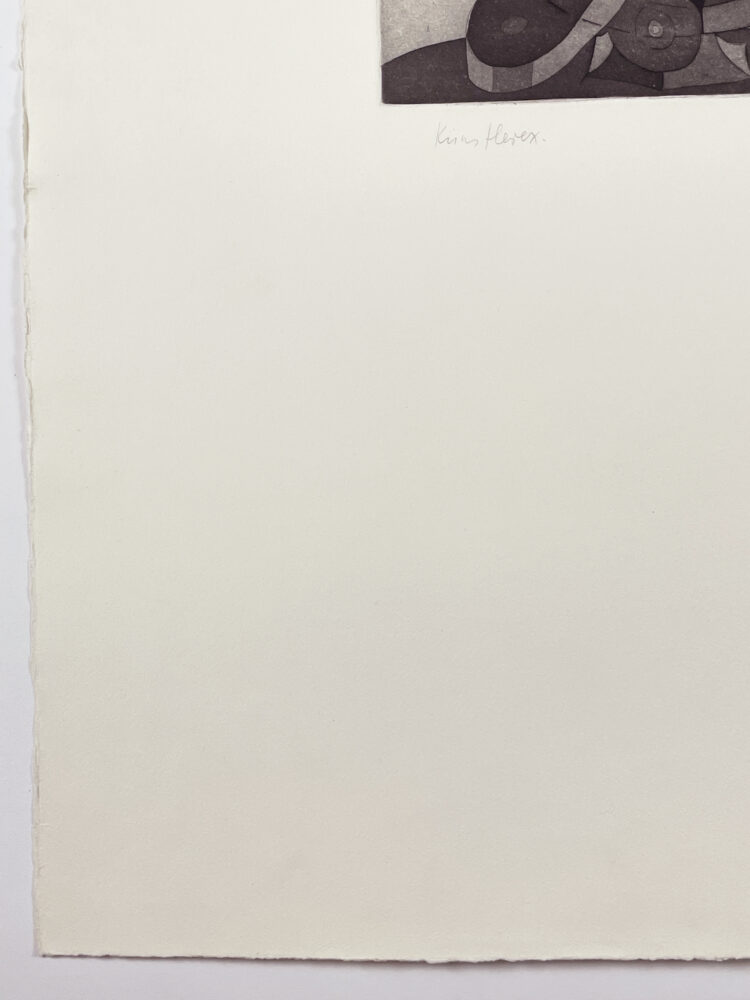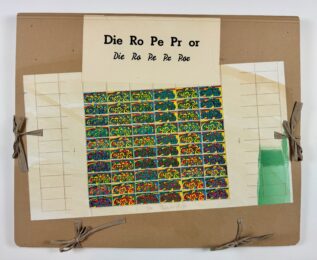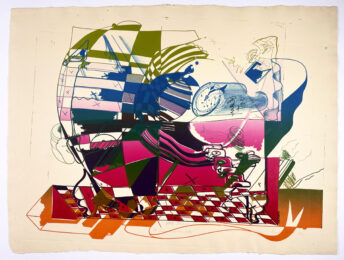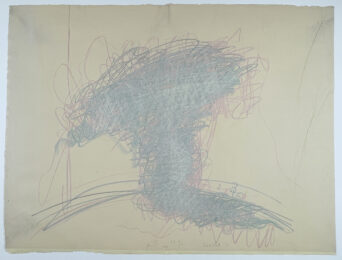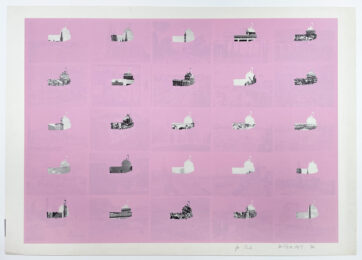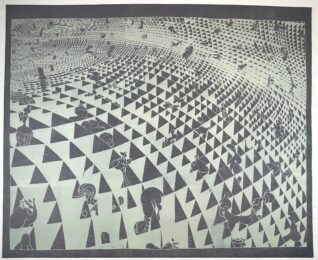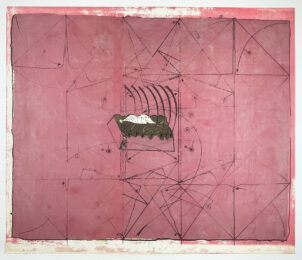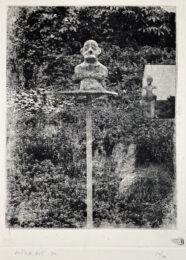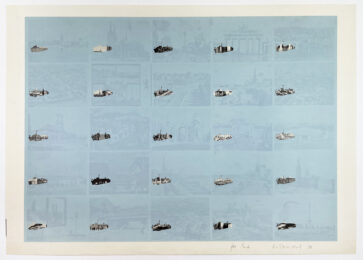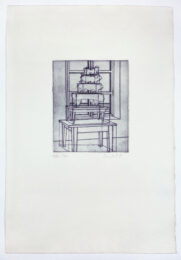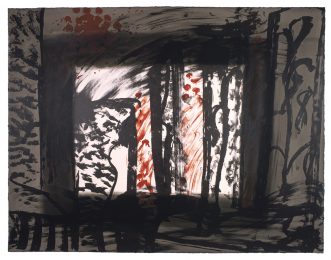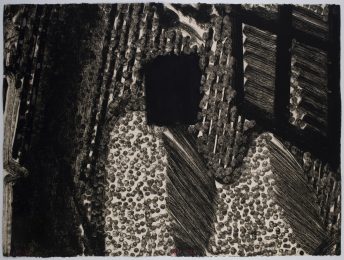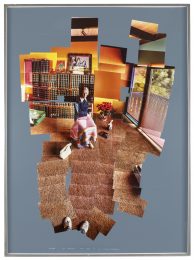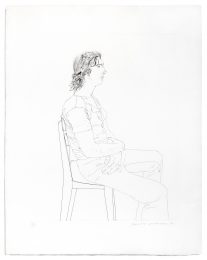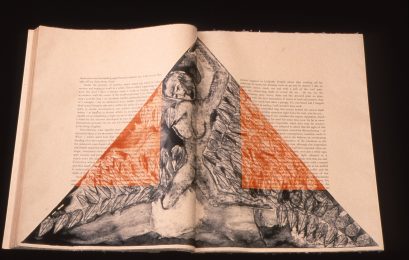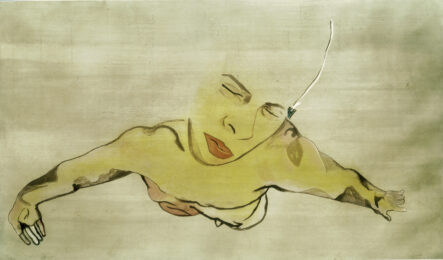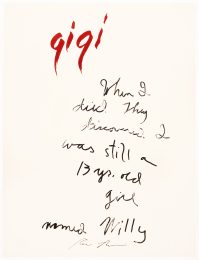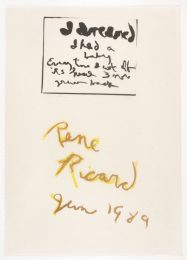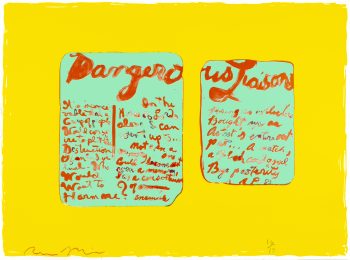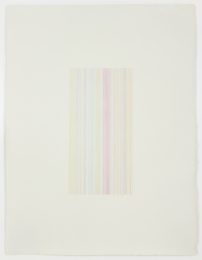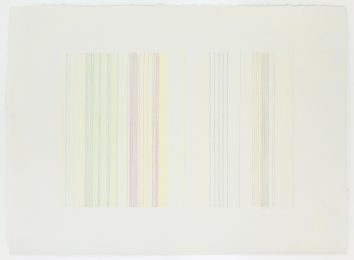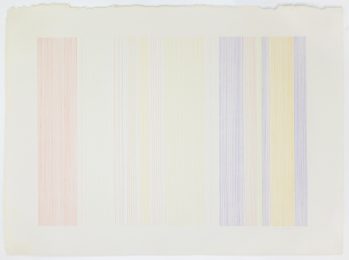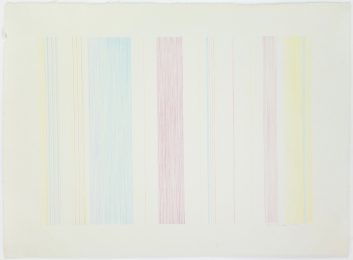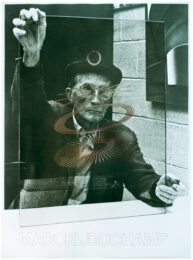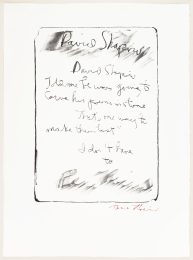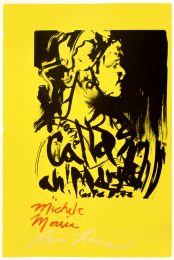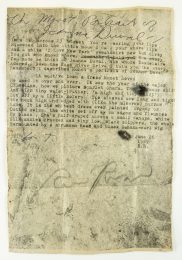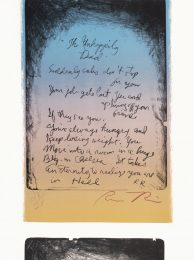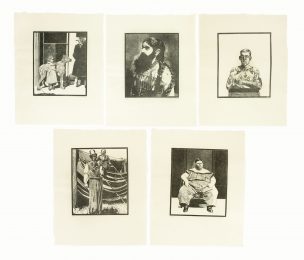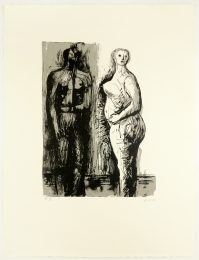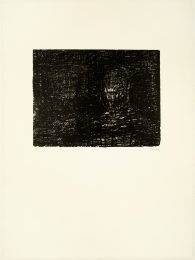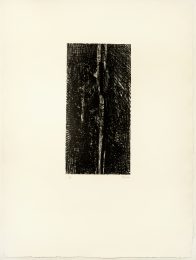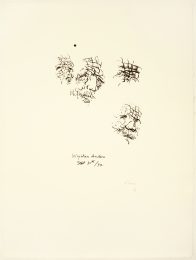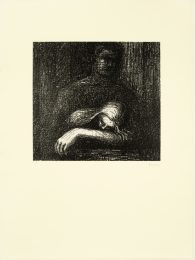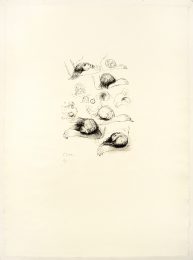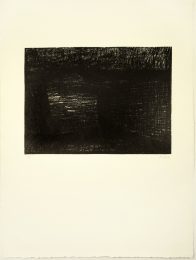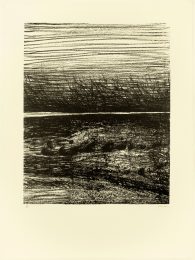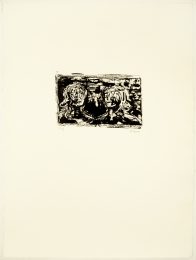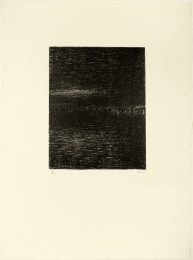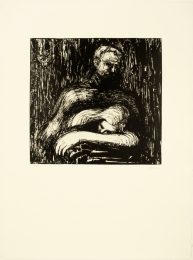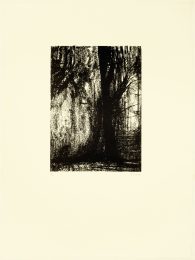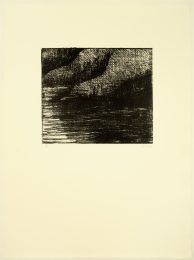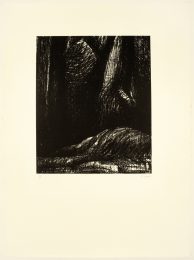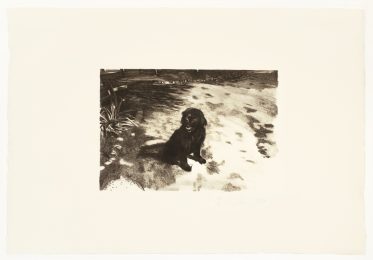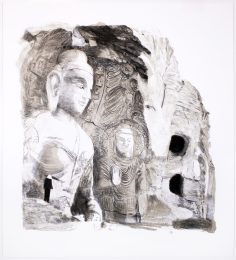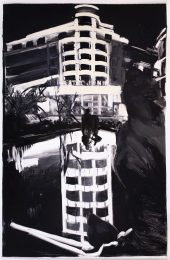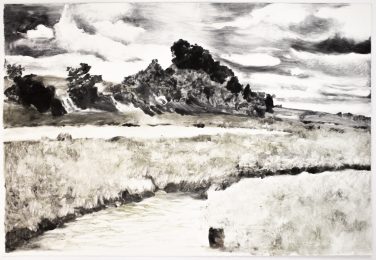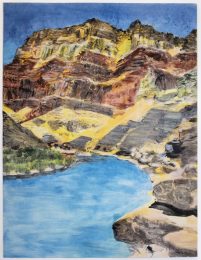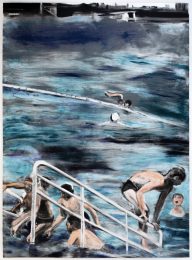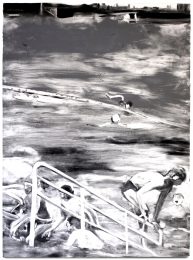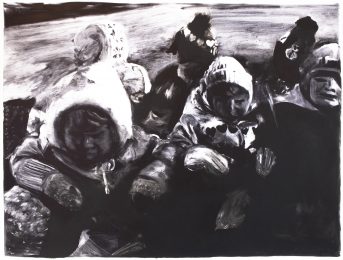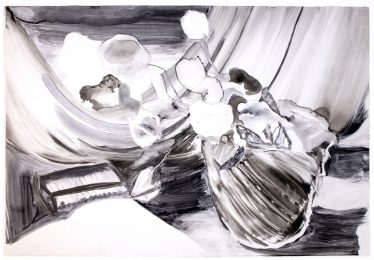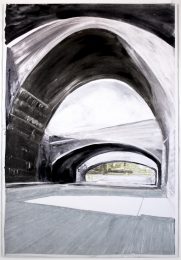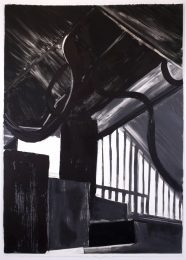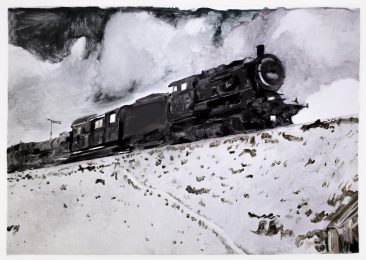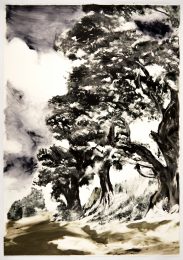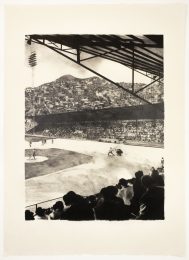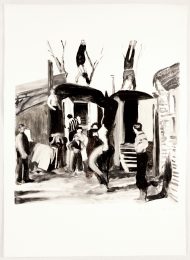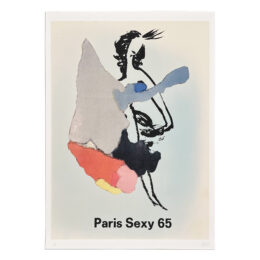Details — Click to read
Sliced sausage, a fork and knife, a cutting board, and a cow mid-slurp comprise this elegant yet tongue-in-cheek black and white Dieter Roth etching. Dieter Roth has long represented food in his work (even using food as a material, as in ”Literaturwurst,” an artist book which consisted of various periodicals chopped up, mixed with lard and spices and stuffed into a sausage casing.)
A Thought 1971
Plate 11.6 x 9.6 in. / 29.5 x 24.5 cm / Paper 27 x 20.9 in. / 69 x 53 cm
Intaglio printing (etching and drypoint) in dark green on white handmade paper. Edition of 20 with 6 AP. This copy a signed proof. Printed by Karl Schulz, Braunschweig, and published by Petersburg Press, London. (Roth 207)
Condition: Various soft creases throughout upper and lower sheet. Upper corners slightly worn. 1.5” vertical crease upper middle edge. Two 3” creases upper right corner.
Dieter Roth was a printmaker from childhood: his first etching at the age of 16 was scratched into a soda can, and despite the relative failure of the can to print anything but a shadow of ink, he continued his study and by 20 was a serious apprentice in lithography to a well-known commercial artist, Eugen Jordi. Later he would continue to print and publish much of his own work. From the 1960s onward, his collaborations with Petersburg Press brought him international recognition and produced some of his most celebrated work: 6 Piccadillies (1970), and Containers (1972).
Interested in chance and spontaneity, Roth was drawn to make prints using unorthodox means: according to mathematical principles, using equations, or by randomly rearranging blocks before they were run through the press. The artist often printed plates repeatedly in different colors, producing many variations from just a few images. He used the printing press and materials to interrogate the creative process rather than just as tools to achieve an edition of identical prints: for example, overprinting or under-inking, or running objects through the press (in 1968, a box of chocolates). Roth was not just interested in the chance of making pictures but the unpredictability of decay: allowing the grease from slices of meat to slowly contaminate paper, immersing a print in vegetable juice, clamping metal to paper to produce rust, and pouring chocolate over a finished work.
Roth would make hundreds of print editions and books over his career and blurred the line between genres and mediums, embarking on prodigious collaborations and experimentation with music, poetry, art, and literary works.
